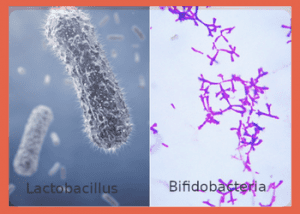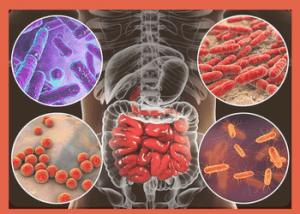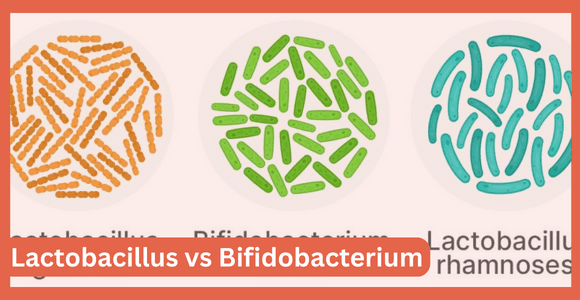As the popularity of probiotics continues to rise, so does the supplement market. In fact, it is estimated that this sector will reach a whopping $45.64 billion valuation in due time – and counting! Probiotics are defined as living microorganisms that provide health benefits by surviving our digestion process, ultimately providing us with essential nutrients.
Probiotics are known to provide multiple health benefits by diversifying the microbiome. The multitude of microflora in this intricate network help regulate overall wellness, but two popular species typically found in probiotic supplements come from the genera Bifidobacterium and Lactobacillus.
Table of Contents
What are Bifidobacterium and Lactobacillus?
Lactobacillus is a class of facultatively anaerobic, rod-shaped bacteria that inhabit the human gut as well as other areas. Unlike many types of bacteria, they are microaerophilic and do not form spores during reproduction.
Furthermore, this particular species plays a major role in lactic acid fermentation; it has become increasingly important for research into gastrointestinal health due to its abundance when found in the intestinal microbiome.
 Not only can Lactobacillus be found in the human gut, but it is also present in other parts of the body—including the genital and urinary systems. Additionally, for female bodies specifically, this major microbial component inhabits the vagina as well.
Not only can Lactobacillus be found in the human gut, but it is also present in other parts of the body—including the genital and urinary systems. Additionally, for female bodies specifically, this major microbial component inhabits the vagina as well.
Beneficial bacteria, such as Lactobacillus acidophilus, are capable of creating biofilms in our gut and vagina that enable their survival during harmful environmental conditions.
In addition to providing a protective barrier from pathogens, these organisms can actually thrive off the nutrients found within our bodies. Furthermore, dairy products with lactobacilli present have been deemed probiotic-rich foods for humans.
Benefits of Bifidobacterium
To start, let’s cover the fundamentals: Bifidobacterium is an essential genus of bacteria in the digestive systems, vaginas, and mouths of mammals. Characterized as Gram-positive with a unique branched shape that runs off glucose rather than oxygen (anaerobic), this bacterium accounts for 25% of fecal microbes found among adults and 80% among infants – incredibly high numbers indeed!
What sets this genus apart from the other bacteria is its specific metabolic pathway, which allows it to ferment carbohydrates. This process comes in handy for us since plant and milk carbs remain undigestible as-is. Fermentation converts them into short-chain fatty acids (SCFAs), a primary energy source for our intestinal cells.
If you’re feeling gassy and bloated, it could be a sign of Bifidobacterium deficiency, which is a type of beneficial bacteria that lives in your gut and helps with digestion.
| Benefit | Description |
|---|---|
| Boosts Immunity | Increases the production of antibodies and enhances the activity of immune cells |
| Promotes Digestion | Improves digestion and reduces digestive issues |
| Prevents Infections | Produces natural antimicrobial substances that kill harmful bacteria, viruses, and fungi |
| Lowers Inflammation | Reduces inflammation in the body |
| Supports Mental Health | Linked to improvements in mood and cognitive function |
| Regulates Blood Sugar | Improves insulin sensitivity and reduces inflammation |
| Protects Against Allergies | Modulates the immune system and prevents the development of allergic reactions |
| Enhances Nutrient Absorption | Improves absorption of nutrients like calcium, magnesium, and iron |
| Helps Maintain a Healthy Weight | Reduces inflammation, regulates appetite, and improves gut health |
| Reduces Risk of Colorectal Cancer | Produces compounds with anti-cancer properties and improves gut health |
Not only do Bifidocacterium provide our bodies with essential SCFAs, but they also serve as guards of sorts by helping to protect us from infection.
 For example, studies have proven that B. Infantis has an expansive range of antimicrobial properties and can prevent the development of pathogens in the body, while B. animalis DN-173 010 is capable of adhering to intestinal cells which halts incoming viruses or bacteria from attaching itself to our epithelial cells – keeping us safe from infection.
For example, studies have proven that B. Infantis has an expansive range of antimicrobial properties and can prevent the development of pathogens in the body, while B. animalis DN-173 010 is capable of adhering to intestinal cells which halts incoming viruses or bacteria from attaching itself to our epithelial cells – keeping us safe from infection.
Species of the genus have been proven to not only bolster our immune systems but in particular, B. longum has been found to trigger immunological defense mechanisms in germ-free mice and B. breve YIT4064 specifically heightens IgA antibodies for rotavirus — a major contributor to childhood diarrheal diseases — among tested mice.
Benefits of Lactobacillus
Lactobacillus belongs to the Firmicutes phylum, identifiable by their Gram-positive cell walls and exclusive possession of PanK-II enzymes in the Coenzyme A (CoA) pathway.
Non-spore-forming rod shape bacteria use transport functions to sustain themselves due to the difficulty of synthesizing amino acids or other molecules necessary for survival. Like Bifidobacterium, Lactobacillus ferments carbohydrates into SCFAs which are found ubiquitously in mammalian gut and vaginal systems.
| Benefit | Description |
|---|---|
| Boosts Immunity | Enhances immune system function by increasing the production of antibodies |
| Promotes Digestion | Improves digestion and absorption of nutrients |
| Prevents Infections | Produces antimicrobial substances that kill harmful bacteria, viruses, and fungi |
| Lowers Inflammation | Reduces inflammation in the body |
| Supports Women’s Health | Helps prevent and treat vaginal infections |
| Regulates Blood Sugar | Improves insulin sensitivity and reduces inflammation |
| Supports Oral Health | Reduces risk of gum disease and cavities |
| Enhances Nutrient Absorption | Improves absorption of nutrients like calcium and iron |
| Supports Mental Health | Linked to improvements in mood and cognitive function |
| Reduces Risk of Diarrhea | Reduces severity and duration of diarrhea caused by various factors |
With their impressive tolerance for low pH conditions, Lactobacilli are regularly used to produce popular dairy products like cheese and yogurt. Recently, Diane M. Citron’s laboratory at UCLA conducted an extensive review of the Lactobacillus genus and discovered commercial applications for several species within the genus. This study highlights how these bacteria can traverse through our gastrointestinal tract without difficulty due to their ability to survive drastic changes in intestinal pH levels.
Frequently Asked Questions
What is the Difference Between Bifidobacteria and Lactic Acid Bacteria?
Bifidobacteria are microorganisms that have evolved to live in the human digestive system. Unlike lactic acid bacteria, which convert sugar into lactic acid as their primary metabolic byproduct, bifidobacteria metabolize sugar to generate both acetic and lactic acids – a combination of compounds with positive health benefits for humans.
What Probiotic has Both Lactobacillus and Bifidobacterium?
Klaire Labs Ther-Biotic Pro IBS Relief
What is the Difference Between Lacto and Bifido Cultures?
A primary distinction between Lactobacillus and Bifidobacteria lies in the type of advantageous byproducts they generate2. While Lactobacillus ferments refined sugars to produce lactic acid, Bifidobacteria are largely responsible for forming short-chain fatty acids (or SCFAs). Nonetheless, both species do create lactic acid as well.
Lactobacillus vs Bifidobacterium for Babies
Both Lactobacillus and Bifidobacterium are important for a baby’s gut health, but Bifidobacterium is especially crucial during the first few months of life because it helps to establish a healthy gut microbiome and may reduce the risk of allergies and other health issues.
Conclusion
After considering all of this, it is important to keep in mind that when selecting probiotics for your diet, live bacteria-containing products such as refrigerated probiotic strains that are heat-dried, kefir, and fermented foods should be taken into consideration.
Unlike S. Boulardii which provides the best results with freeze-dried forms, Lactobacilli may not offer the same advantages since freezing them could reduce their viability levels. Not only do Lactobacillus and Bifidobacterium produce SFCAs, but the combination of both strains also provides enhanced protective benefits.
Therefore, mixing these two cultures is known to be the most effective way to gain a maximum level of protection. Despite the safety of both supplements, there have been cases where patients with underlying conditions like bleeding diseases experienced adverse effects from their overuse. Thus, it is essential to always consult your physician before drastically changing your dietary habits.
